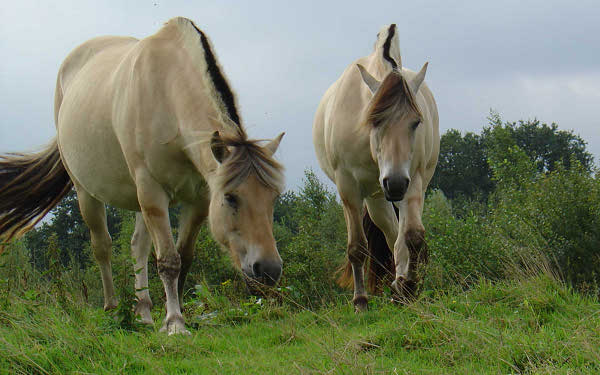
The dun dilution gene is generally quite obvious due to the specific (almost primitive) markings that indicate its presence. Some animals will display darker striping of the legs, withers & face.
Dun Dilution
The dun dilution affects both black & red pigments, so it’s presence will show up on any color. It is often considered a primitive color because ancestral & wild breeds are predominately or entirely dun. Interestingly, Arabians & Thoroughbreds don’t carry this dilution. Although often incorrectly interchanged for buckskin, this is one of the few dilutions that can almost always be determined by one physical factor, a dorsal stripe.
The quick and easy way to determine a dun gene is to look for a dorsal stripe from mane to tail.
Dun Characteristics
The dun gene causes primitive markings on the animal which occur in a wide variety of combinations that vary from animal to animal. Below are examples of some of the more common primitive markings.
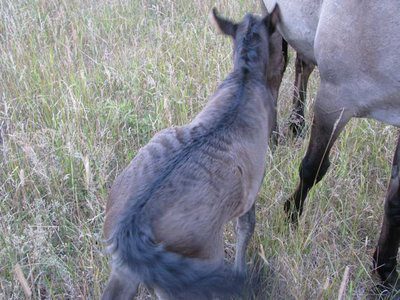
All dun animals have a dorsal stripe, it is a clear indication that an animal carries the dilution. The line (also called eel stripe, lineback or backstripe) will be darker than the coat color and run from the poll to the dock of the tail. On lighter animals it can be seen through the mane and tail, giving it a dark stripe.
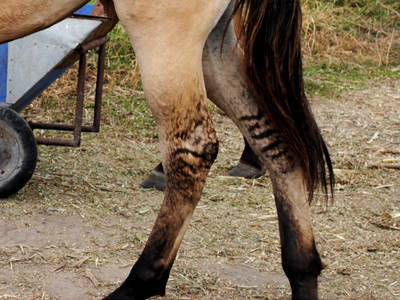
Often dun animals will have darker points and leg markings but some display the more primitive zebra stripes or leg barring that is reminiscent of their distant zebra cousins. They are usually the same color as the dorsal stripe and run horizontally around the knees or hocks.

Some dun animals will have a stripe, shadow or webbing that comes off the dorsal and runs down the withers. This can display in a variety of different shapes and markings but will always be the same color as the dorsal stripe.
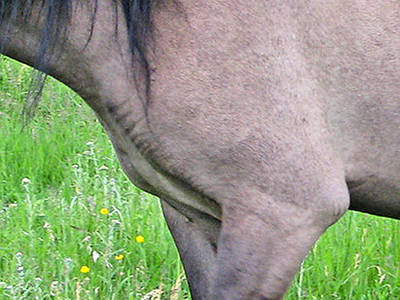
Some dun animals will show mottling, striping or shading on the face, shoulder, hindquarters or ribs. They vary from small blotches or zebra striping to long stripes that blend into the body. Also called cobwebbing or spiderwebbing.
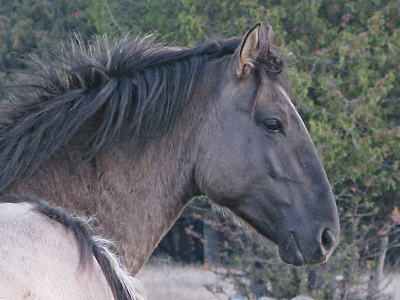
Some duns, especially on darker bases will have dark shading on their face, giving them the appearance of wearing a mask. It can vary from shading or smudging on the forehead to a mask that covers the entire head.
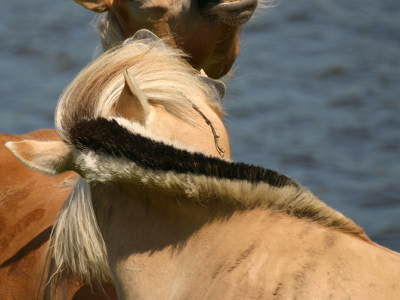
As the dorsal runs through the mane it darkens the center and leaves the outer edges light, creating a frosted look which can also be called a sandwich mane.
Dun Shades
The dun dilution affects black, chestnut and bay animals and within each color a variety of shades can be displayed, although the change tends to be more dramatic on darker bases.
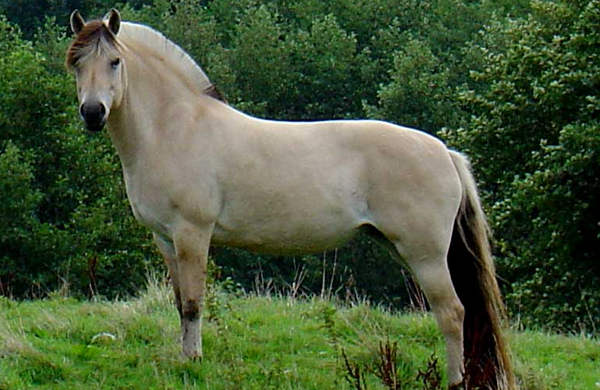
Bay, Yellow or Zebra Dun
Perhaps the most common shade of dun is the yellow dun that comes from the dun dilution on a bay base. The coat ranges from a light creamy yellow to a deep redding gold and mane, tail, points and primitive markings are very dark.
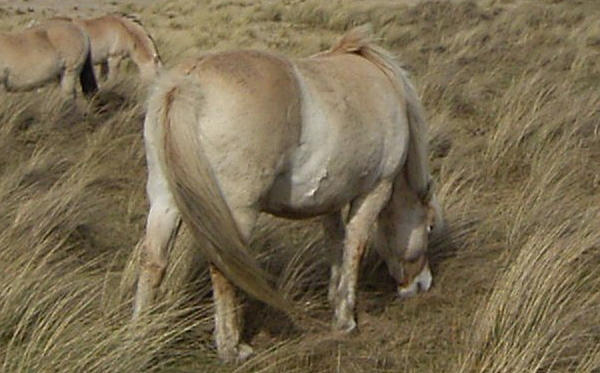
Red Dun
Also called apricot, peach or claybank dun, red dun comes from a dun dilution on a chestnut base. Often confused with chestnut, all hair is lightened on the body, but mane, tail, points and primitive markings are a darker, undiluted shade of red.
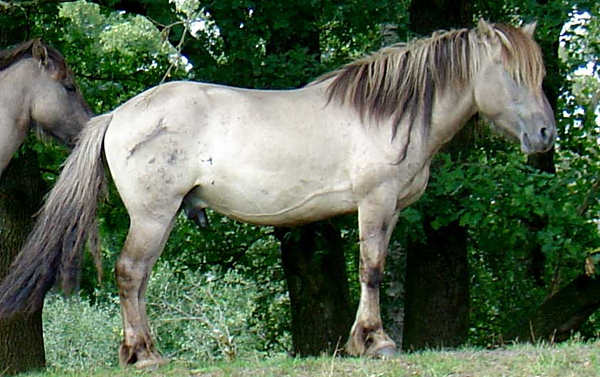
Grullo or Grulla
Dun on a black base which has a variety of names including black dun, blue dun, grullo (male), grulla (female) slate dun and lobo dun. This creates a smoky blue color that ranges from light mouse grey to a deep slate grey and is often considered the rarest of the dun shades. Mane, tail, points and primitive markings are dark black.
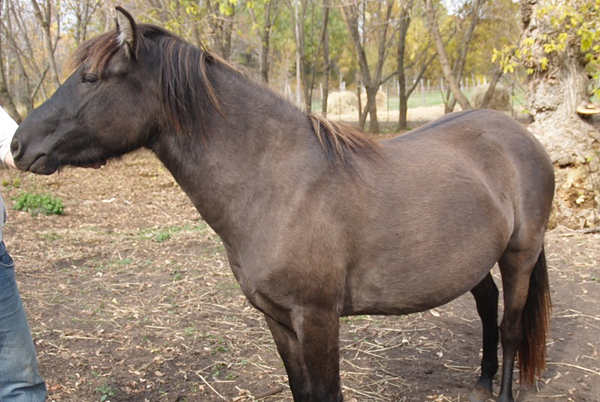
Wolf Dun
As with most dilutions, the dun effect on a seal brown base is not as strong as the rest. Also called olive grullo or muddy grullo, wolf dun changes body hair from a muddy-brown to an almost greenish color and mane, tail, points and primitive markings are dark brown to black.
